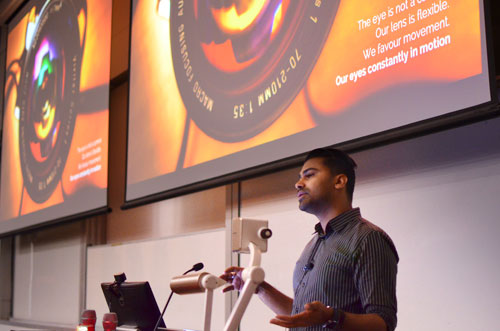Howdy

I'm Nikash SINGH,
a Manager and Lecturer in UI and UX Design. what's UI+UX?UI stands for User Interface.
UX is User eXperience. Both are Design roles aimed at making things (often software) easier to use. But they require very different skills. Visit 'Services'
I prefer roles tapping into both skillsets.
Why me?
I've worked at Australia's best companies, consulted for a global leader and secured a PhD from Sydney Uni. From industry leaders, I've picked up best practices, and academic research has made my process rigorous. To give back, I contribute to open source software, teach uni students and mentor both grads and young practitioners.
My head
With almost 2 decades experience, I'm a strategic thinker with operational finesse. I completed my PhD at the University of Sydney, where I now lecture in Design. I've a methodic approach to research and I ground my design recommendations in visual perception and cognitive science theory. My own HCI papers have been cited by researchers at Georgia Tech, IBM, MIT and Xerox Research.
My heart
I love Design (cliché alert) - practising, teaching and reflecting on it. My passion for it spills over into my volunteer work in Open Source Software. As a Designer I'm committed to solving real problems in order of need. In the workplace I'm an advocate of using design to improve accessibility, DE&I, sustainability and workplace safety. I put users before technology, and planet before people.
My hands
I've crafted countless positive user experiences. After having consulted for BCG, Commonwealth Bank, Qantas, Suncorp, Telstra and the Universities of NSW and Sydney among others, my clients know and trust they're in safe hands. I've worked Agile since 2006 in teams of varying sizes and maturities. I lead meritocratically and mentor Designers to be creative-but-critical thinkers.
It might seem odd to discuss the heart in this equation, on a professional site. But I think that's what's needed most in design practices. Heart makes sure we make the right things, for the right reasons. Empathy re-orients Design as a truly conscientious practice.
“Design should not dominate things or people.
Dieter RAMS
It should help people, that's it's role.”
Why Design?
Why does your team need a Designer with scientific literacy and consulting acumen?
Without knowing your specific circumstances, I can only offer this generality;
Good Designers reduce noise
Two thirds of your brain is involved in visual information processing 1 and each day you'll absorb 34GB of it 2. In short, we live in an age of overload. We process 5 times more info than people did in 1986 3 - and much of it is poorly structured and not very useful 4. That's where Design can help cut through the noise...
Design organises information
Good design converts an abundance of stimulus into meaning by tapping into powerful cognitive processes of visual interpretation 5 which allow us to turn shapes, colours and textures into ideas, insights and memories. In my career I have sought to harness and teach what is known about these processes so that, as Designers, we can make;
 software that enables
software that enables data that informs
data that informs graphics that clarify
graphics that clarify
So what?
In short, design isn't about making things pretty - it's essential for making sense of complex information. We know consumers form visual impressions very quickly 6 and that visual learning is prevalent among the population 7. Clearly Design can influence comprehension, allowing us to be more productive and make better decisions. So in my opinion, Designers don't just move pixels, they move people.
“Design is thinking made visual.”
Saul BASS
What others say
Rather than blab on about myself, I've been fortunate enough to have brilliant colleagues and esteemed managers kindly endorse the quality of my work, here are 3 recent testimonials from among the 32 on LinkedIn;
"His enthusiasm, resilience ... and clear mastery of the role made a huge contribution to our ‘non-digital’ team embracing the digital transformation and getting to results faster."
Angus ARMOUR, FAICD
Fmr. CEO and Managing Director, AICD
"He not only has vast knowledge about design and the underlying principles, but is also extremely talented at passing on this knowledge to others... He has always been very reliable and highly dedicated, often going far beyond what was expected of him."
Prof. Martin TOMITSCH
Director of Innovation, University of Sydney.
"I did not realise how much thought had gone into the design. I though they were good - but when he presented them to the development team, I realised it was great and had so much depth to it which I did not get from simply looking at the screen mock ups."
Veronique CARTIER
Business Analyst, Qantas.
What next?
If my work resonates with you please get in touch. Otherwise, if you'd like to know more about me, my work or my teaching, you can;
citations on this page ...
- EAGLEMAN (2015). 'The Brain'
- BOHN & SHORT (2012). 'Measuring Consumer Information'
- LEVITIN (2015). 'The Organized Mind'
- WURMAN (1990). 'Information Anxiety'
- KOFFKA (1935). 'Principles of Gestalt Psychology'
- LINDGAARD et al. (2011). 'Attention web designers...'
- JAWED et al. (2019). 'Classification of Visual and Non-visual Learners...'



